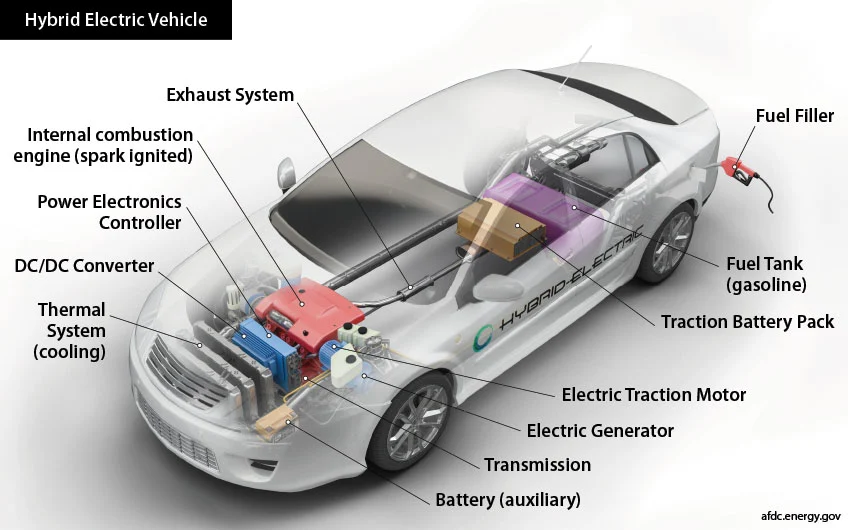Hybrid Electric Vehicle Basics
A hybrid electric vehicle uses an electric motor/generator along with an internal combustion engine—offering high fuel economy; low tailpipe emissions; and the power, range, and convenience of a conventional vehicle.

A hybrid electric vehicle does not plug in to charge. Instead, the battery is charged by the internal combustion engine and via regenerative braking.
In regenerative braking, the electric motor/generator captures energy normally lost during braking. This recovery and reuse of energy results in better fuel economy without sacrificing performance.
Energy stored in the battery provides extra power during starts and acceleration. It can also power auxiliary loads and reduce engine idling when the vehicle is stopped.
Additional Resources
Learn about NREL's transportation research.
For more information about hybrid electric vehicles, visit the U.S. Department of Energy's Alternative Fuels Data Center.
Share
Last Updated March 25, 2025
